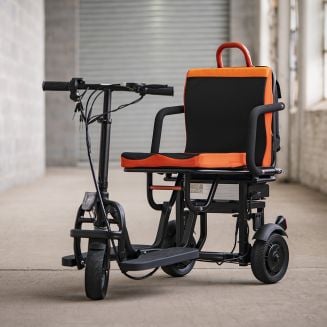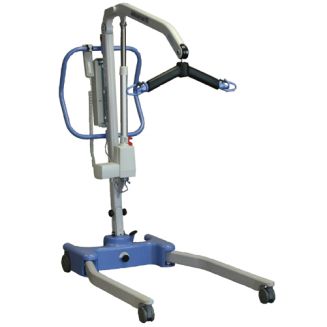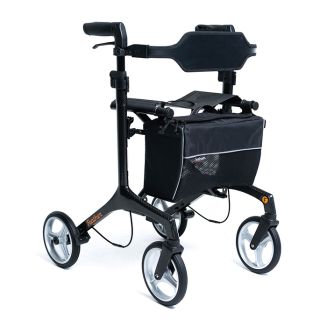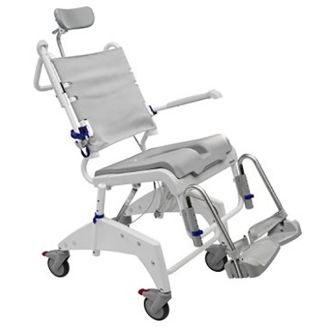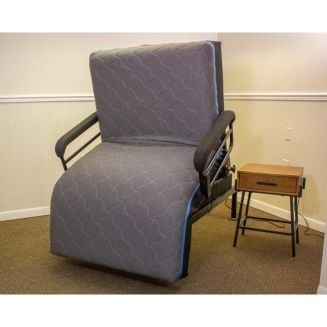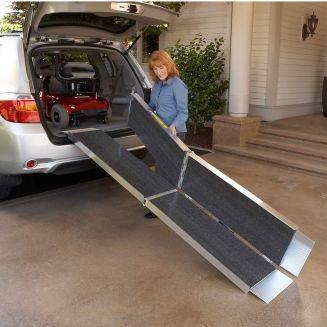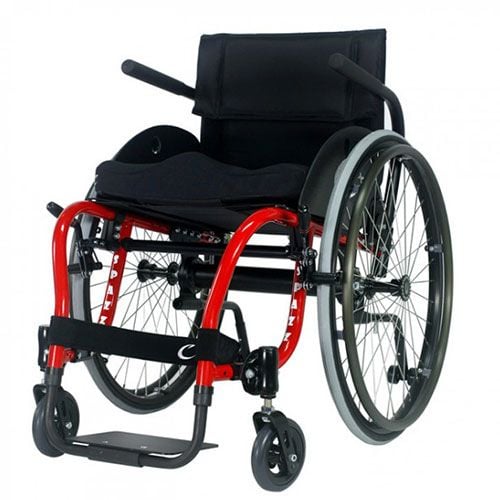Spazz G Ultralight Wheelchair by Colours
- 44667
- Colours
- Spazz-G
- 44667
- Colours
- Spazz-G
Availability: Leaves Warehouse In: 4-6 weeks
Leaves Warehouse In: 4-6 weeks
FREE shipping
Chat live with a product specialist
Customize & buy
Customize And Buy
Details
Quick Overview
- Leaves Warehouse In 4-6 weeks
- Ultralight, 17.5 lbs.
- Fully customizable
- Economical ultralight sport wheelchair
Description
Have you been dreaming of that unique custom wheelchair that would not cost you an arm and a leg? Have Faith. Colours have answered your prayers with the SPAZZ-G. Now not only can you have a adjustable and stylish wheelchair, but with the reasonable price of the SPAZZ-G you can kiss your out-of-pocket expenses goodbye. Let’s not forget the SPAZZ-G has a main rigid axle tube that gives you the durability, rigidity, and support that you depend on from your wheelchair frame.
The SPAZZ-G features not only growth seat width and depth, but Colours also offers adjustable positioning for every unique body. And with the SPAZZ-G unique contoured frame, you will never again have to worry about loading your wheelchair over your steering wheel. With the SPAZZ-G positive locking adjustable backrest, you will benefit from its full range of infinite backrest angle settings. Now you can truly find your perfect sweet spot to set your backrest angle.
Features
- 0, 2, 4, 6 Degrees Camber Angle
- Bottom Taper Frame Only
- Adjustable Center Of Gravity
- Unique contoured frame
- Highly adjustable for a variety of users
- 1 in. tubing (A7003) Rigid Alum. Frame
- Many positioning options
- Free Shipping
Specifications
Manuals & Warranties
Product Specifications
| Weight Capacity | 250 lbs. | |
| Product Weight | 19 lbs. | |
| Seat Width | 14" - 20" | |
| Seat Depth | 13" - 20" | |
| Seat-to-Floor Height | 15" - 19.5" | |
| Rear Wheel Size | 24" - 26" | |
| Axle Type | Quick Release | |
| Back Height | 8" - 18" | |
| Upholstery Color | Black - Red | |
| HCPCS | K0005 | |
| Warranty on Frame | Lifetime Limited | |
| Shipping Weight | 30 lbs. | |
| Box Length | 30" | |
| Box Width | 24" | |
| Box Height | 36" | |
| Weight | 17.5 lbs. | |
| Backrest Height | 8″-20″ | |
| Frame | Rigid | |
| Material | 6061-T6 Aluminum | |
| Camber | 0-14 | |
| Warranty | Limited lifetime warranty |
Returns
Return Policy
Please carefully review your order before confirming your purchase. All sales are considered final. We do not offer returns, refunds, or exchanges on this product.
For Safety and/or Hygienic reasons this product is under our no returns, no refund policy. The only exceptions to this policy include:
- receiving a defective or damaged item,
- receiving the wrong or incorrect item,
In these cases, our Customer Service team must be notified within 5 days of receipt in order to be eligible for a refund or exchange.
Please view our full return policy, here.

